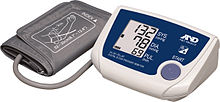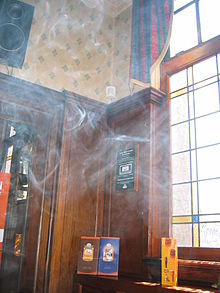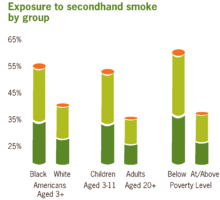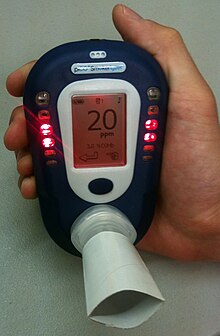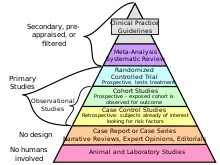Telehealth involves the distribution of health-related services and information via electronic information and telecommunication technologies.
It allows long distance patient/clinician contact and care, advice,
reminders, education, intervention, monitoring and remote admissions. As well as provider distance-learning; meetings, supervision, and presentations between practitioners; online information and health data management and healthcare system integration. Telehealth could include two clinicians discussing a case over video conference;
a robotic surgery occurring through remote access; physical therapy
done via digital monitoring instruments, live feed and application
combinations; tests being forwarded between facilities for
interpretation by a higher specialist; home monitoring through
continuous sending of patient health data; client to practitioner online conference; or even videophone interpretation during a consult.
As the population grows and ages, and medical advances are made which prolong life, demands increase on the healthcare system. Healthcare providers are also being asked to do more, with no increase in funding, or are encouraged to move to new models of funding and care such as patient-centered or outcomes based, rather than fee-for-service. Some specific health professions already have a shortage (i.e. Speech-language pathologists). When rural settings, lack of transport, lack of mobility (i.e. In the elderly or disabled), decreased funding or lack of staffing restrict access to care, telehealth can bridge the gap.
As the population grows and ages, and medical advances are made which prolong life, demands increase on the healthcare system. Healthcare providers are also being asked to do more, with no increase in funding, or are encouraged to move to new models of funding and care such as patient-centered or outcomes based, rather than fee-for-service. Some specific health professions already have a shortage (i.e. Speech-language pathologists). When rural settings, lack of transport, lack of mobility (i.e. In the elderly or disabled), decreased funding or lack of staffing restrict access to care, telehealth can bridge the gap.
Telehealth versus telemedicine
Telehealth is sometimes discussed interchangeably with telemedicine. The Health Resources and Services Administration
distinguishes telehealth from telemedicine in its scope. According to
them, telemedicine only describes remote clinical services; such as
diagnosis and monitoring, while telehealth includes preventative,
promotive and curative care delivery.
This includes the above-mentioned non-clinical applications like
administration and provider education which make telehealth the
preferred modern terminology.
History
The
development and history of telehealth or telemedicine (terms used
interchangeably in literature) is deeply rooted in the history and
development in not only technology but also society itself. Humans have
long sought to relay important messages through torches, optical telegraphy, electroscopes, and wireless transmission. In the 21st century, with the advent of the internet, portable devices and other such digital devices are taking a transformative role in healthcare and its delivery.
Earliest instances
Although, traditional medicine
relies on in-person care, the need and want for remote care has existed
from the Roman and pre-Hippocratic periods in antiquity. The elderly
and infirm who could not visit temples for medical care sent
representatives to convey information on symptoms and bring home a
diagnosis as well as treatment. In Africa, villagers would use smoke signals to warn neighbouring villages of disease outbreak. The beginnings of telehealth have existed through primitive forms of communication and technology.
1800s to early 1900s
As
technology developed and wired communication became increasingly
commonplace, the ideas surrounding telehealth began emerging. The
earliest telehealth encounter can be traced to Alexander Graham Bell
in 1876, when he used his early telephone as a means of getting help
from his assistant Mr. Watson after he spilt acid on his trousers.
Another instance of early telehealth, specifically telemedicine was
reported in The Lancet
in 1879. An anonymous writer described a case where a doctor
successfully diagnosed a child over the telephone in the middle of the
night.
This Lancet issue, also further discussed the potential of Remote
Patient Care in order to avoid unnecessary house visits, which were part
of routine health care during the 1800s. Other instances of telehealth during this period came from the American Civil War, during which telegraphs were used to deliver mortality lists and medical care to soldiers.
From the late 1800s to the early 1900s the early foundations of wireless communication were laid down. Radios
provided an easier and near instantaneous form of communication. The
use of radio to deliver healthcare became accepted for remote areas. The Royal Flying Doctor Service of Australia is an example of the early adoption of radios in telehealth.
Mid-1900s to 1980s
When the American National Aeronautics and Space Administration (NASA),
began plans to send astronauts into space, the need for Telemedicine
became clear. In order to monitor their astronauts in space,
telemedicine capabilities were built into the spacecraft as well as the first spacesuits.
Additionally, during this period, telehealth and Telemedicine were
promoted in different countries especially the United States and Canada.
In 1964, the Nebraska Psychiatric Institute began using
television links to form two-way communication with the Norfolk State
Hospital which was 112 miles away for the education and consultation
purposes between clinicians in the two locations. The Logan International Airport in Boston established in-house medical stations in 1967. These stations were linked to Massachusetts General Hospital.
Clinicians at the hospital would provide consultation services to
patients who were at the airport. Consultations were achieved through
microwave audio as well as video links.
In 1972 the Department of Health, Education and Welfare
in the United States approved funding for seven telemedicine projects
across different states. This funding was renewed and two further
projects were funded the following year.
1980s to 1990s – maturation and renaissance
Telehealth projects underway before and during the 1980s would take off but fail to enter mainstream healthcare. As a result, this period of telehealth history is called the "maturation" stage and made way for sustainable growth.
Although State funding in North America was beginning to run low,
different hospitals began to launch their own telehealth initiatives. Additionally, NASA started experimenting with their ATS-3 satellite. Eventually, NASA started their SateLife/HealthNet programme which tried to increase the health services connectivity in developing countries.
2000s and onward
The combination of sustained growth, the advent of the internet and the increasing adoption of ICT in traditional methods of care spurred the revival or "renaissance" of telehealth.
The diffusion of portable devices like laptops and mobile devices in
everyday life made ideas surrounding telehealth more plausible.
Telehealth is no longer bound within the realms of telemedicine but has
expanded itself to promotion, prevention and education.
In the 2010s, integration of smart home telehealth technologies
(wellness and health devices and software, Internet of Things) appears
to be a growing phenomenon in the industry. Beyond that, healthcare
organizations are increasingly adopting the use of self-tracking
technologies, cloud-based technologies, and innovative data analytic
approaches to accelerate the transformation of the healthcare system.
Methods and modalities
Telehealth requires a strong, reliable broadband connection. As broadband infrastructure has improved, telehealth usage has become more widely feasible.
Healthcare providers often begin telehealth with a needs assessment which asses hardships which can be improved by telehealth such as travel time, costs or time off work. Collaborators, such as technology companies can ease the transition.
Delivery can come within four distinct domains: live video (synchronous), store-and-forward (asynchronous), remote patient monitoring, and mobile health.
Store and forward
Store-and-forward telemedicine involves acquiring medical data (like medical images, biosignals etc.) and then transmitting this data to a doctor or medical specialist at a convenient time for assessment offline. It does not require the presence of both parties at the same time. Dermatology (cf: teledermatology), radiology, and pathology are common specialties that are conducive to asynchronous telemedicine. A properly structured medical record preferably in electronic
form should be a component of this transfer. The 'store-and-forward'
process requires the clinician to rely on a history report and
audio/video information in lieu of a physical examination.
Remote monitoring
Telehealth Blood Pressure Monitor
Remote monitoring, also known as self-monitoring or testing, enables
medical professionals to monitor a patient remotely using various
technological devices. This method is primarily used for managing
chronic diseases or specific conditions, such as heart disease, diabetes
mellitus, or asthma. These services can provide comparable health
outcomes to traditional in-person patient encounters, supply greater
satisfaction to patients, and may be cost-effective. Examples include home-based nocturnal dialysis and improved joint management.
Real-time interactive
Electronic consultations are possible through interactive telemedicine services which provide real-time interactions between patient and provider.
Videoconferencing has been used in a wide range of clinical
disciplines and settings for various purposes including management,
diagnosis, counseling and monitoring of patients.
Major developments
In policy
Telehealth
is a modern form of health care delivery. Telehealth breaks away from
traditional health care delivery by using modern telecommunication
systems including wireless communication methods.
Traditional health is legislated through policy to ensure the safety of
medical practitioners and patients. Consequently, since telehealth is a
new form of health care delivery that is now gathering momentum in the
health sector, many organizations have started to legislate the use of
telehealth into policy.
In New Zealand, the Medical Council has a statement about telehealth on
their website. This illustrates that the medical council has foreseen
the importance that telehealth will have on the health system and have
started to introduce telehealth legislation to practitioners along with
government.
Transition to mainstream
Traditional use of telehealth services has been for specialist
treatment. However, there has been a paradigm shift and telehealth is no
longer considered a specialist service.
This development has ensured that many access barriers are eliminated,
as medical professionals are able to use wireless communication
technologies to deliver health care.
This is evident in rural communities. For individuals living in rural
communities, specialist care can be some distance away, particularly in
the next major city. Telehealth eliminates this barrier, as health
professionals are able to conduct a medical consultation through the use
of wireless communication technologies. However, this process is
dependent on both parties having Internet access.
Telehealth allows the patient to be monitored between physician
office visits which can improve patient health. Telehealth also allows
patients to access expertise which is not available in their local area.
This remote patient monitoring ability enables patients to stay at home
longer and helps avoid unnecessary hospital time. In the long-term,
this could potentially result in less burdening of the healthcare system
and consumption of resources.
Technology advancement
The technological advancement of wireless communication devices is a major development in telehealth.
This allows patients to self-monitor their health conditions and to not
rely as much on health care professionals. Furthermore, patients are
more willing to stay on their treatment plans as they are more invested
and included in the process, decision-making is shared.
Technological advancement also means that health care professionals are
able to use better technologies to treat patients for example in surgery.
Technological developments in telehealth are essential to improve
health care, especially the delivery of healthcare services, as
resources are finite along with an ageing population that is living
longer.
Major implications and impacts
Telehealth
allows multiple, different disciplines to merge and deliver a much more
uniform level of care using the efficiency and accessibility of
everyday technology. As telehealth proliferates mainstream healthcare
and challenges notions of traditional healthcare delivery, different
populations are starting to experience better quality, access and
personalised care in their lives.
Health promotion
Baby Eve with Georgia for the Breastfeeding Support Project
Telehealth
can also increase health promotion efforts. These efforts can now be
more personalised to the target population and professionals can extend
their help into homes or private and safe environments in which patients
of individuals can practice, ask and gain health information. Health promotion using telehealth has become increasingly popular in underdeveloped countries where there are very poor physical resources available. There has been a particular push toward mHealth applications as many areas, even underdeveloped ones have mobile phone coverage.
In developed countries, health promotion efforts using telehealth have been met with some success. The Australian hands-free breastfeeding Google Glass application
reported promising results in 2014. This application made in
collaboration with the Australian Breastfeeding Association and a tech
startup called Small World Social, helped new mothers learn how to breastfeed. Breastfeeding is beneficial to infant health and maternal health and is recommended by the World Health Organisation and health organisations all over the world.
Widespread breastfeeding can prevent 820,000 infant deaths globally but
the practice is often stopped prematurely or intents to do are
disrupted due to lack of social support, know-how or other factors.
This application gave mother's hands-free information on breastfeeding,
instructions on how to breastfeed and also had an option to call a
lactation consultant over Google Hangout. When the trial ended, all
participants were reported to be confident in breastfeeding.
Health care quality
Theoretically, the whole health system stands to benefit from
telehealth. In a UK telehealth trial done in 2011, it was reported that
the cost of health could be dramatically reduced with the use of
telehealth monitoring. The usual cost of in vitro fertilisation (IVF) per cycle would be around $15,000, with telehealth it was reduced to $800 per patient. In Alaska the Federal Health Care Access Network
which connects 3,000 healthcare providers to communities, engaged in
160,000 telehealth consultations from 2001 and saved the state $8.5
million in travel costs for just Medicaid patients.
There are indications telehealth consumes fewer resources and requires
fewer people to operate it with shorter training periods to implement
initiatives.
However, whether or not the standard of health care quality is
increasing is quite debatable, with literature refuting such claims. Research is increasingly reporting that clinicians find the process difficult and complex to deal with.
Furthermore, there are concerns around informed consent, legality
issues as well as legislative issues. Although health care may become
affordable with the help of technology, whether or not this care will be
"good" is the issue.
Economic evaluations
Due
to its digital nature it is often assumed that telehealth saves the
health system money. However, the evidence to support this is varied.
When conducting economic evaluations of telehealth services, the
individuals evaulating them need to be aware of potential outcomes and
extraclinical benefits of the telehealth service.
Economic viability relies on the funding model within the country being
examined (public vs private), the consumers willingness-to-pay, and the
expected remuneration by the clinicians or commercial entities
providing the services (examples of research on these topics from
teledermoscopy in Australia).
Nonclinical uses
- Distance education including continuing medical education, grand rounds, and patient education
- Administrative uses including meetings among telehealth networks, supervision, and presentations
- Research on telehealth
- Online information and health data management
- Healthcare system integration
- Asset identification, listing, and patient to asset matching, and movement
- Overall healthcare system management
- Patient movement and remote admission
Limitations and restrictions
While
many branches of medicine have wanted to fully embrace telehealth for a
long time, there are certain risks and barriers which bar the full
amalgamation of telehealth into best practice. For a start, it is dubious as to whether a practitioner can fully leave the "hands-on" experience behind.
Although it is predicted that telehealth will replace many
consultations and other health interactions, it cannot yet fully replace
a physical examination, this is particularly so in diagnostics, rehabilitation or mental health.
The benefits posed by telehealth challenge the normative means of
healthcare delivery set in both legislation and practice. Therefore,
the growing prominence of telehealth is starting to underscore the need
for updated regulations, guidelines and legislation which reflect the
current and future trends of healthcare practices.
Telehealth enables timely and flexible care to patients wherever they
may be; although this is a benefit, it also poses threats to privacy, safety, medical licensing and reimbursement. When a clinician and patient are in different locations, it is difficult to determine which laws apply to the context.
Once healthcare crosses borders different state bodies are involved in
order to regulate and maintain the level of care that is warranted to
the patient or telehealth consumer. As it stands, telehealth is complex
with many grey areas when put into practice especially as it crosses
borders. This effectively limits the potential benefits of telehealth.
An example of these limitations include the current American reimbursement infrastructure, where Medicare
will reimburse for telehealth services only when a patient is living in
an area where specialists are in shortage, or in particular rural
counties. The area is defined by whether it is a medical facility as
opposed to a patient's' home. The site that the practitioner is in,
however, is unrestricted. Medicare will only reimburse live video
(synchronous) type services, not store-and-forward, mhealth or remote
patient monitoring (if it does not involve live-video). Some insurers
currently will reimburse telehealth, but not all yet. So providers and
patients must go to the extra effort of finding the correct insurers
before continuing. Again in America, states generally tend to require
that clinicians are licensed to practice in the surgery' state,
therefore they can only provide their service if licensed in an area
that they do not live in themselves.
More specific and widely reaching laws, legislations and
regulations will have to evolve with the technology. They will have to
be fully agreed upon, for example, will all clinicians need full
licensing in every community they provide telehealth services too, or
could there be a limited use telehealth licence? Would the limited use
licence cover all potential telehealth interventions, or only some? Who
would be responsible if an emergency was occurring and the practitioner
could not provide immediate help – would someone else have to be in the
room with the patient at all consult times? Which state, city or country
would the law apply in when a breach or malpractice occurred?
A major legal action prompt in telehealth thus far has been
issues surrounding online prescribing and whether an appropriate
clinician-patient relationship can be established online to make
prescribing safe, making this an area that requires particular scrutiny.
It may be required that the practitioner and patient involved must meet
in person at least once before online prescribing can occur, or that at
least a live-video conference must occur, not just impersonal
questionnaires or surveys to determine need.
Ethical issues
Informed consent
is another issue – should the patient give informed consent to receive
online care before it starts? Or will it be implied if it is care that
can only practically be given over distance? When telehealth includes
the possibility for technical problems such as transmission errors or
security breaches or storage which impact on ability to communicate, it
may be wise to obtain informed consent in person first, as well as
having backup options for when technical issues occur. In person, a
patient can see who is involved in their care (namely themselves and
their clinician in a consult), but online there will be other involved
such as the technology providers, therefore consent may need to involve
disclosure of anyone involved in the transmission of the information and
the security that will keep their information private, and any legal
malpractice cases may need to involve all of those involved as opposed
to what would usually just be the practitioner.
The state of the market
The
rate of adoption of telehealth services in any jurisdiction is
frequently influenced by factors such as the adequacy and cost of
existing conventional health services in meeting patient needs;
the policies of governments and/or insurers with respect to coverage
and payment for telehealth services; and medical licensing requirements
that may inhibit or deter the provision of telehealth second opinions or
primary consultations by physicians.
Projections for the growth of the telehealth market are
optimistic, and much of this optimism is predicated upon the increasing
demand for remote medical care. According to a recent survey, nearly
three-quarters of U.S. consumers say they would use telehealth. At present, several major companies along with a bevvy of startups are working to develop a leading presence in the field.
In the UK, the Government's Care Services minister, Paul Burstow,
has stated that telehealth and telecare would be extended over the next
five years (2012–2017) to reach three million people.
Developing countries
For developing countries, telemedicine and eHealth
can be the only means of healthcare provision in remote areas. For
example, the difficult financial situation in many African states and
lack of trained health professionals has meant that the majority of the
people in sub-Saharan Africa are badly disadvantaged in medical care,
and in remote areas with low population density, direct healthcare
provision is often very poor
However, provision of telemedicine and eHealth from urban centres or
from other countries is hampered by the lack of communications
infrastructure, with no landline phone or broadband internet connection,
little or no mobile connectivity, and often not even a reliable
electricity supply.
The Satellite African eHEalth vaLidation (SAHEL) demonstration project has shown how satellite broadband
technology can be used to establish telemedicine in such areas. SAHEL
was started in 2010 in Kenya and Senegal, providing self-contained,
solar-powered internet terminals to rural villages for use by community
nurses for collaboration with distant health centres for training,
diagnosis and advice on local health issues.
In 2014, the government of Luxembourg, along with satellite operator, SES and NGOs, Archemed, Fondation Follereau, Friendship Luxembourg, German Doctors and Médecins Sans Frontières, established SATMED, a multilayer eHealth platform to improve public health in remote areas of emerging and developing countries, using the Emergency.lu disaster relief satellite platform and the Astra 2G TV satellite.
SATMED was first deployed in response to a report in 2014 by German
Doctors of poor communications in Sierra Leone hampering the fight
against Ebola, and SATMED equipment arrived in the Serabu clinic in
Sierra Leone in December 2014.
In June 2015 SATMED was deployed at Maternité Hospital in Ahozonnoude,
Benin to provide remote consultation and monitoring, and is the only
effective communication link between Ahozonnoude, the capital and a
third hospital in Allada, since land routes are often inaccessible due
to flooding during the rainy season.
